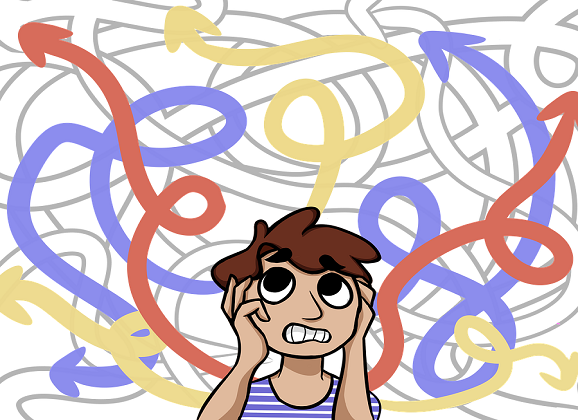A Picture Says 1,024 Words

I posted a photo on Instagram for the first time in a long while, and the next day, multiple people informed me I did it wrong. (see photo to the right)
Apparently, people thought that sharing my photo as I did implied I would come to campus the next day in a tie and shirt. I did not. So, in trying to educate myself (in the only way I know how), I decided to do some research into the psychology of picture taking.
WE <3 TAKING PICTURES
For 2010, the New York Times estimated that people took about 300 billion photos worldwide. For 2017, they estimated this number quadrupled with 1.3 trillion photos taken. And if we count just the photos that are uploaded to Facebook, in 2015, they reported they get about two billion photos uploaded daily.
Daily.
Although photos can be great for capturing a memory later on, how do they impact our enjoyment of the experience in the moment?
When researchers posed this same question to 200 participants, the answers were split: about 1/3 reported it would increase their enjoyment, another 1/3 said it would decrease their enjoyment, and the last 1/3 said it would have no effect whatsoever. So what’s the answer?
That’s why you gotta love the scientific method.
SAY CHEESE!

In both conditions, a professional tour guide described the sights, and at the end of the trip, the researchers asked the participants how much they enjoyed the experience. Surprisingly, the participants taking the pictures (even though they didn’t even get to keep the pictures) reported enjoying their time significantly more than those who didn’t take pictures.
In another study, the researchers approached people in a food court at a farmer’s market. Here, they asked the patrons to either take pictures of their dining experience (on their own phones this time) or simply eat the meal as they normally would.
And again, those who took pictures reported enjoying the experience more than those who didn’t.

Here, they once again found that those who took pictures enjoyed the experience more, and this was due to increased engagement.
In fact, in nearly all of the studies, the researchers found that those who took pictures were more engaged with the experience, and because of this increased engagement, they enjoyed the experience more–just as the opening quote suggested.
BUT WHY ARE YOU SAYING CHEESE?
In later work by the same researchers, they found an important qualifier for this pictures-make-the-experience-better effect (my name, not theirs ha). That is, are you taking the picture for yourself or are you taking it with the intention to share with others?

Then, two days after Christmas, the researchers had the participants send them their 10 photos and report how enjoyable the Christmas photo-taking experience was. Here, the researchers found that when participants had the “self-goal” in mind, they enjoyed the experience significantly more than those who had the “share-goal” in mind.
Other research replicated this effect at a popular tourist attraction, where participants who reported taking the photo for their own collection (vs. the intention to share with others) said they enjoyed the experience more.
When we take pictures with the intention to share, not only does it arouse self-presentation concerns (e.g., How will people judge this photo? Do I look good in this shot?) which lowers overall enjoyment, but it also reduces our engagement with the experience. Which, as we saw in the first set of studies, explained why picture-taking increases enjoyment.
TO INSTAGRAM OR NOT TO INSTAGRAM

So, when it came to the picture I shared on Instagram, what kind of goal did I have in mind when it was taken? Did the photo enhance my enjoyment of the experience? Well, considering it came during my job interviews “experience,” I don’t think that photo enhanced my enjoyment in any way.
Picture-Perfectly,
jdt
[Today’s post comes from a request by one of my readers, Debbie Killinger, so if there’s a topic in your life you would like to know more about, let me know, and it may very well get its own post!]
Everyday Psychology: Although we focused on how taking pictures in the moment can improve your enjoyment of the experience in the moment, a lot of other research shows that people really value picture-taking because it lets them revisit that memory in the future. In particular, it lets us “feel” that memory to a much stronger degree than simply recalling it would. So when people say a picture says a thousand words, yes, there are a lot of things a photo can convey. But importantly, it lets us relive the emotions of that moment–which words themselves can only symbolically evoke and describe.
Barasch, A., Zauberman, G., & Diehl, K. (2017). How the intention to share can undermine enjoyment: Photo-taking goals and evaluation of experiences. Journal of Consumer Research, 44(6), 1220-1237.
Diehl, K., Zauberman, G., & Barasch, A. (2016). How taking photos increases enjoyment of experiences. Journal of Personality and Social Psychology, 111(2), 119.
P.S. Interested in the title’s unique number count? Well that’s how many words were in today’s post, including references and this comment here 😉






